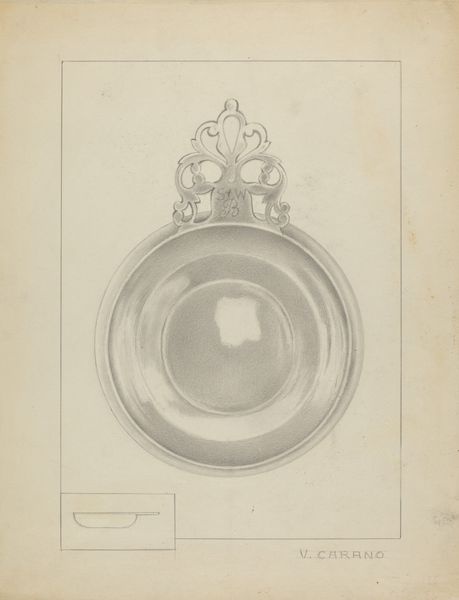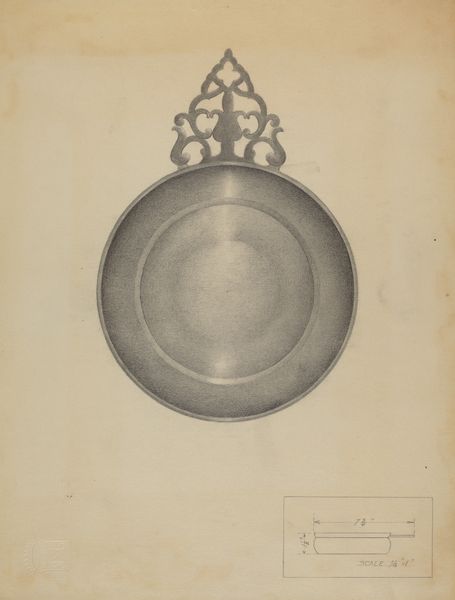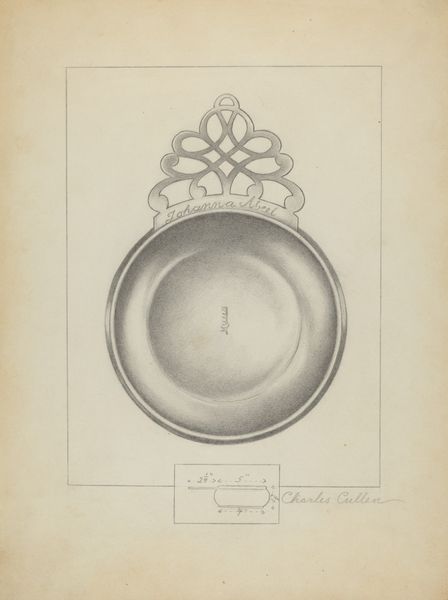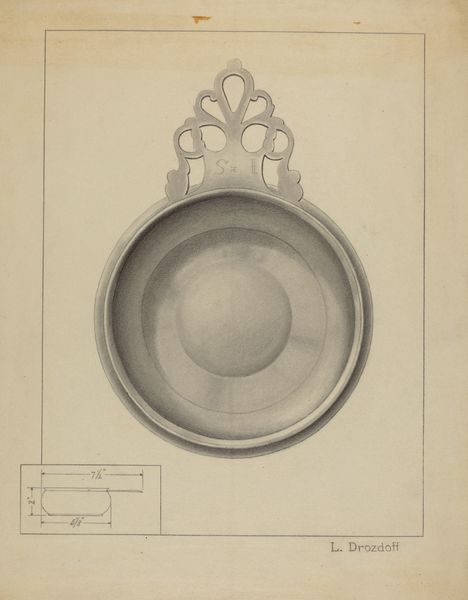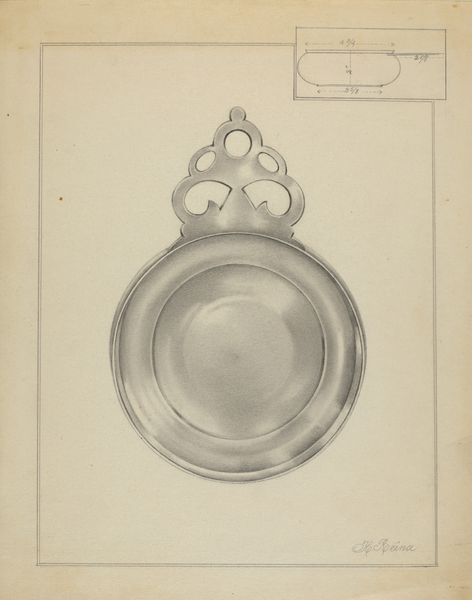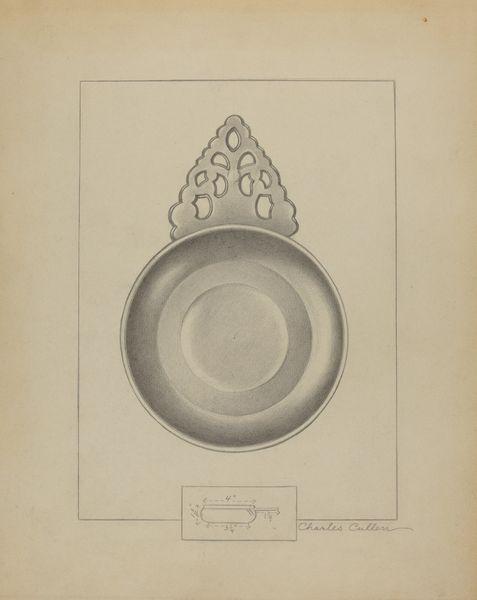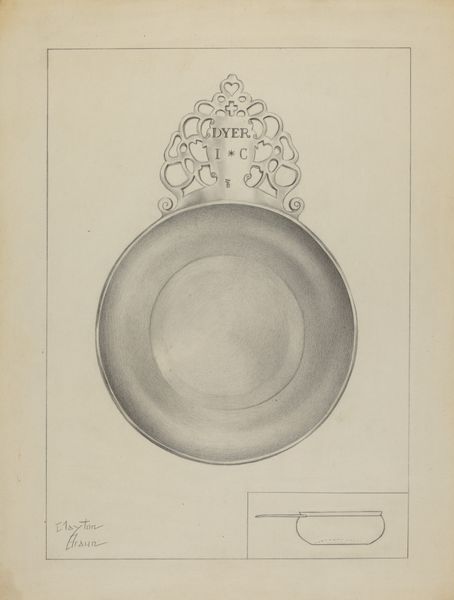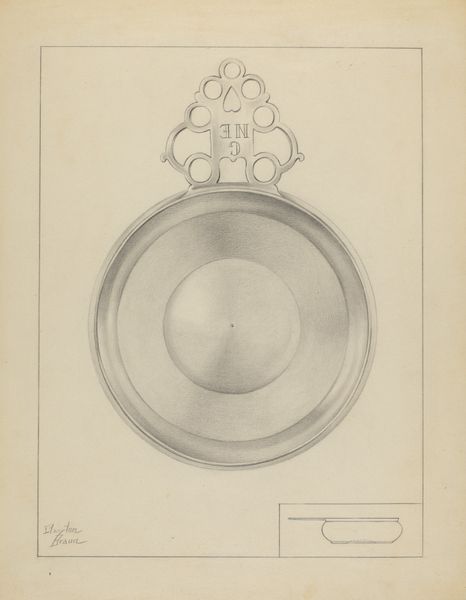
drawing, paper, pencil
#
drawing
#
paper
#
pencil drawing
#
pencil
Dimensions: overall: 28.8 x 22.3 cm (11 5/16 x 8 3/4 in.) Original IAD Object: 2" high; 5 1/2" wide
Copyright: National Gallery of Art: CC0 1.0
Curator: This pencil drawing from around 1936, titled "Silver Porringer," is by Hester Duany. What's your first impression? Editor: Immediately, I notice the detail and care put into depicting the reflective qualities of the metal using only pencil. It seems almost photorealistic in parts, while also feeling quite schematic. Curator: The porringer itself, a shallow bowl with a handle, would have been laden with symbolism. It represents nourishment, family, domesticity. Often, they were passed down through generations, becoming heirlooms that embodied ancestral stories. Editor: Interesting. I was struck by how the drawing is almost clinical. There's the elevation view and then the detail sketch below, as if this was prepared for a craftsman to copy or document an object from an estate. Curator: Indeed. The motifs embellishing the handle seem steeped in symbolism too. See the little crosses and stylized hearts? This tells us about the values and perhaps even religious beliefs of the original owner. Think about the communal aspect of sharing food and how that fosters bonding. It reflects deeper cultural norms, rituals centered around mealtimes and togetherness. Editor: And it makes you wonder, too, about the labor that went into crafting the actual silver porringer. The silversmith's skill, the access to precious materials, and what that implied about wealth and social status in the 1930s. It's also fascinating that someone took the time to render it so faithfully in pencil. Why not a photograph, if available? The human labor in both the object and the rendering feels important. Curator: Yes, this is a study not just of form, but of memory itself. What does it mean to memorialize the objects we live with? The drawing preserves its cultural weight. Editor: I now appreciate how the medium is itself telling; humble pencil documenting precious metal and skill. Curator: Looking at it through these combined perspectives illuminates how everyday items become touchstones across time. Editor: Absolutely, revealing layers of cultural value, social standing and, yes, artistic vision in documenting functional objects.
Comments
No comments
Be the first to comment and join the conversation on the ultimate creative platform.
